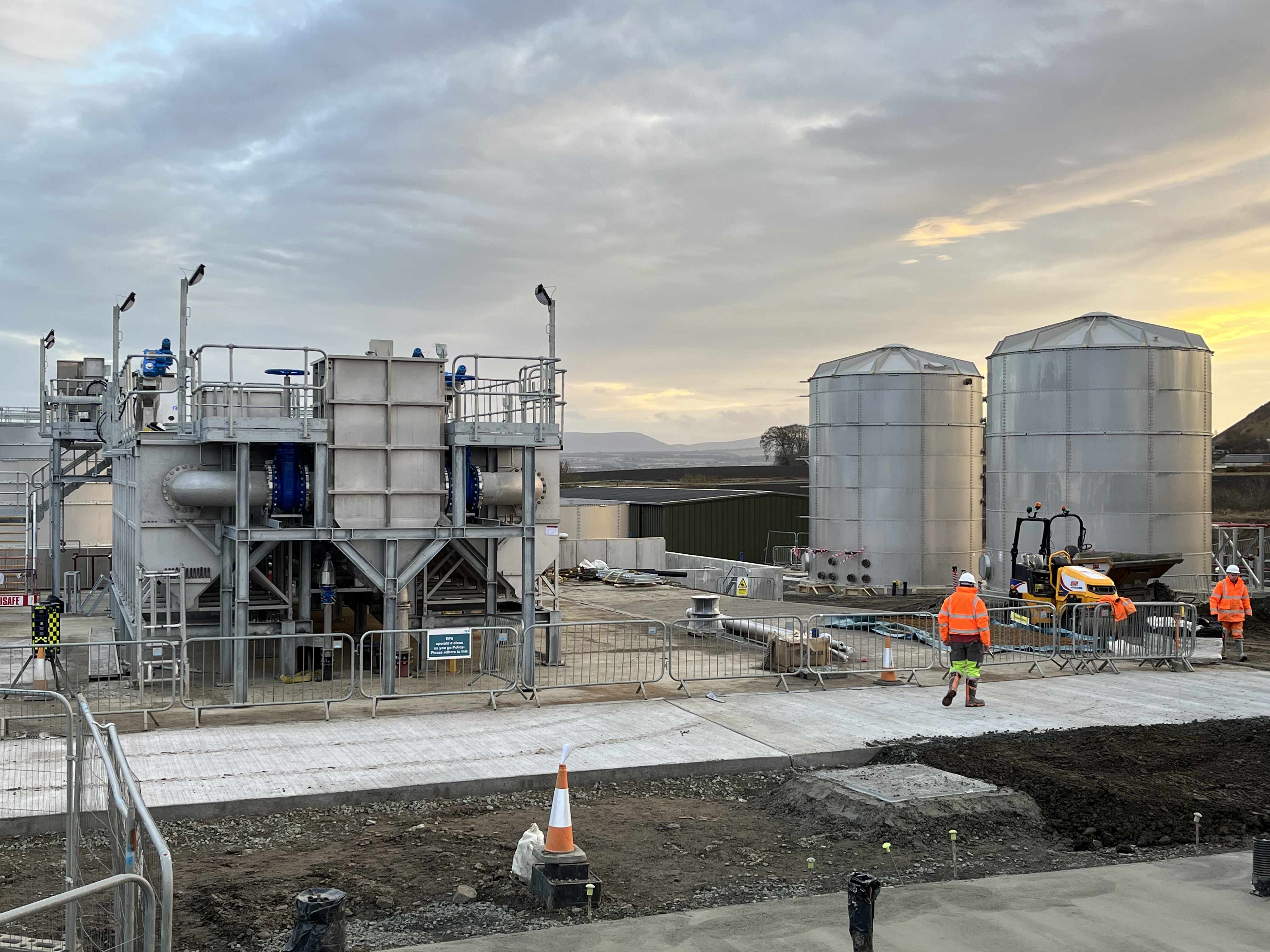Winchburgh Wastewater Treatment Works

Winchburgh is located 5 miles west of Edinburgh Airport and the existing wastewater treatment works lies to the south-east of Winchburgh, approximately 200m from the nearest residential street. The site access road runs adjacent to the main Glasgow to Edinburgh railway line, the top of the embankment being a couple of metres from the roadside, with the railway line sitting approximately 10m below. The existing works is a traditional biofiltration process, rated for 3,800PE. Due to Winchburgh being designated within the West Lothian Development Plan for significant housing development, there is a projected population increase to 16,389 PE by 2032. To cope with this increase, ESD have started construction of a new £35M Nereda Treatment plant.

Construction work commenced on site in July 2021 and is due for completion in October 2024
Process Selection
As a result of the growth in the area there is a need to increase the size of the treatment works. The technology selected by Scottish Water to meet this need is the Royal Haskoning DHV Nereda process solution.
This decision was based primarily on the following drivers:
1. Reduced land take due to the smaller footprint for the Nereda solution, compared to a conventional solution.
2. Carbon reduction due to the power required to run a Nereda plant being significantly lower than that required for a conventional works.
The Nereda process technology was developed by Royal HaskoningDHV (RHDHV) and offers sustainable wastewater treatment. The natural sewage treatment process purifies water, using few or no chemicals, through proprietary aerobic granular sludge (AGS) technology.
Design for Manufacturing and Assembly (DFMA) and Collaborative Design
The strategy from the outset of the project was to maximise the use of DFMA and the use of the available digital delivery tools, with the primary aims being:
Reduced Programme:
most of the mechanical and electrical construction can be completed off-site, reducing the amount of manpower required on-site and enabling fabrication and mechanical assembly to be completed in parallel with civil construction.
Improved quality:
stringent quality control in fabrication facilities, coupled with the ability for the client to inspect and snag assemblies prior to delivery.
Reduced HSE Risk:
a significant portion of the construction is completed in a controlled factory environment, rather than on site.
Improved collaboration:
the use of common data environments and design within the 3D world to aid communication of latest information.


